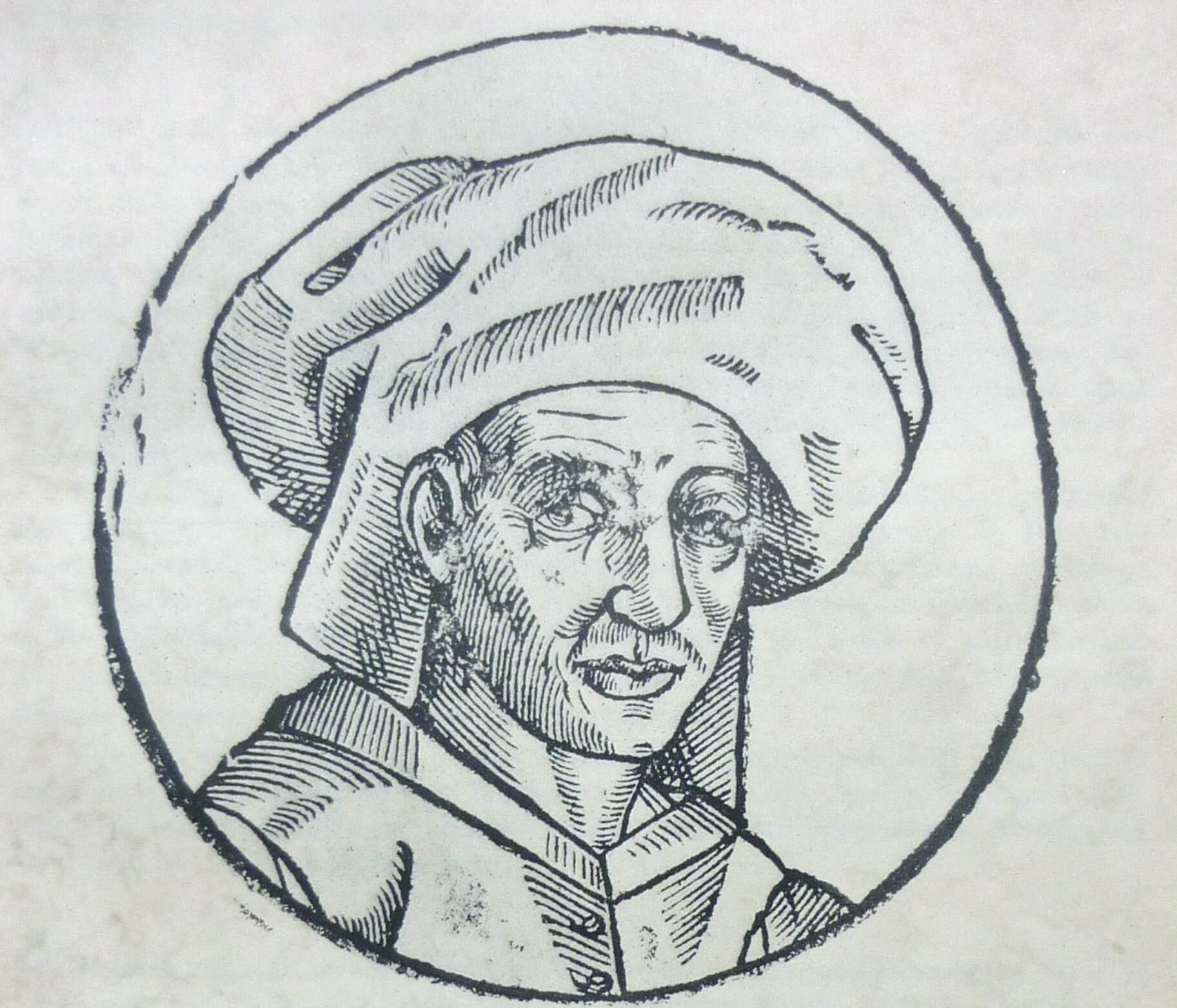They called him princeps musicorum, prince of musicians, and 500 years ago tomorrow, on August 27, 1521, he passed away in Condé-sur-l’Escaut, nowadays Northern France, where the last seventeen years of his life he was provost of the collegiate of Notre Dame, destroyed in 1793 during “the frightening revolution unleashed in France” (Pius X, Duplicem Nostis, September 14, 1904): Josquin Després, or simply Josquin.
The French-Flemish composer was born around 1450 in the northeastern French province of Picardy, and would have a great influence on European polyphonic music. Giuseppe Baini (1775- 1844), bass and then director of the pontifical choir, but above all the first biographer of Palestrina, speaks thus of Josquin:
In a short time, by his new productions, he becomes the idol of Europe. There is no longer tolerance for any but Josquin. Nothing is beautiful unless it be the work of Josquin. Josquin alone is sung in every chapel in Christendom. Nobody but Josquin in Italy, nobody but Josquin in France, nobody but Josquin in Germany, in Flanders, in Hungary, in Spain—Josquin and Josquin alone (G. Baini, Memorie storico-critiche della vita e delle opere di […] Palestrina, Vol. 2, Rome 1828, p. 407).
Nevertheless, Josquin is a somewhat forgotten composer. Yet his contemporaries considered him as the greatest of their time: “he was the most important light in this great science, [the one] from whom all the contrappuntisti who came after him learned” (A. Adami, Osservazioni per bene regolare il coro dei cantori della Cappella Pontificia, Rome 1711, p. 160). Singer and prolific author, the sovereigns liked him: he worked for dukes, kings, cardinals and popes. From Cardinal Ascanio Sforza to Louis XII, king of France; from Ercole I d’Este, duke of Ferrara, to Philip IV, king of France; to Maximilian I, Holy Roman emperor. We find Josquin in Rome, in the papal chapel, between 1489 and 1499 with various interruptions, under the popes Innocent VIII and Alexander VI who, despite their relaxation of morals, were of very refined taste in music and art.
When Josquin arrived in Rome, the Sistine Chapel, commissioned by Sixtus IV (1471-1484), had its appearance, given by the humbler, but important frescoes by great Florentine and Umbrian artists, such as Perugino, Sandro Botticelli, Pinturicchio, Domenico Ghirlandaio, Cosimo Rosselli and Luca Signorelli. In a miniature painting, kept in the Condé Museum of Chantilly, France, we see Pope Sixtus IV attending a Pontifical Mass on the throne; just where today we admire the Last Judgement by Michelangelo (1475-1564) there was a Marian fresco painted by Perugino. During his musical service in the choir loft, located on the right side, Josquin would often have seen a scene like this. And looking up, instead of the chapters of Genesis frescoed by Buonarroti, he would have noticed a vault, or ceiling, painted as golden stars on a blue sky, by Pier Matteo d’Amelia (1445-1508), as evidenced by the Project for the fifteenth-century decoration of the vault of the Sistine Chapel (n. 711A).
In his Roman years Josquin sang in the Pope’s personal choir, the oldest one still active in the world today. The best musicians of the 15th and 16th centuries were part of it, for example: the Franco-Flemish Guillaume Dufay (1397-1474), the Italian Giovanni Pierluigi da Palestrina (1525-1594), the Spaniard Cristóbal Morales (1500-1553) and Francisco Guerrero (1528-1599). On the occasion of this 500th anniversary, I met with Msgr. Marcos Pavan, Maestro Director of the Sistine Chapel Choir, and asked him the following questions.
How was the Papal choir composed during Josquin’s day?
In those years the choir had from 17 to 20 members: tenors, basses and falsettisti, adult men who sang the parts for the high voices. Pope Leo XIII, on February 3, 1902, ordered that from then on, exception being made for the singers still in office, boys would replace the falsettisti.
And these were all grouped around the badalone?
The copy that the French painter Ingres made in 1848 of a painting by Agostino Tassi (1578-1644) shows us the huge music stand, or badalone, placed at the center of the choir loft, round which the singers in their robes cluster.
Tell us about the Pontifical Musical Chorus of the Sistine Chapel today.
It is part of the Office for the Liturgical Celebrations of the Supreme Pontiff. It consists of about 20 adult singers, hired on a permanent basis by the Vatican, and thirty or so boys, who come from a school attached to the Choir itself, from the fourth to the eight grade.
Josquin seems to have composed music for his Roman fellow singers.
At least three motets appear in the Vatican codices: Domine, non secundum peccata nostra, the Tract of the Mass for Ash Wednesday; Monstra te esse matrem, the fourth verse of the hymn Ave Maris Stella; the acrostic motet Illibata Dei Virgo. Here you can hear Domine, non secundum peccata nostra we performed last August 5 in Szeged, Hungary: soprano and alto sing the first verse (Ps 103:10), tenor and bass the second (Ps 79:8), and the four voices of the whole choir conclude (Ps 79:9).
“One can read his name carved on our choir [loft] in the Vatican palace,” writes your predecessor, Andrea Adami da Bolsena (ibidem, p. 159) in a little book published in 1711. Tell us about this autograph that Josquin left on the wall of the choir loft in Sistine Chapel.
Over the centuries the singers scratched their names into the interior walls of that choir loft. Josquin’s own graffito was also uncovered after recent restorations.
Photo credit: wikipedia commons.


